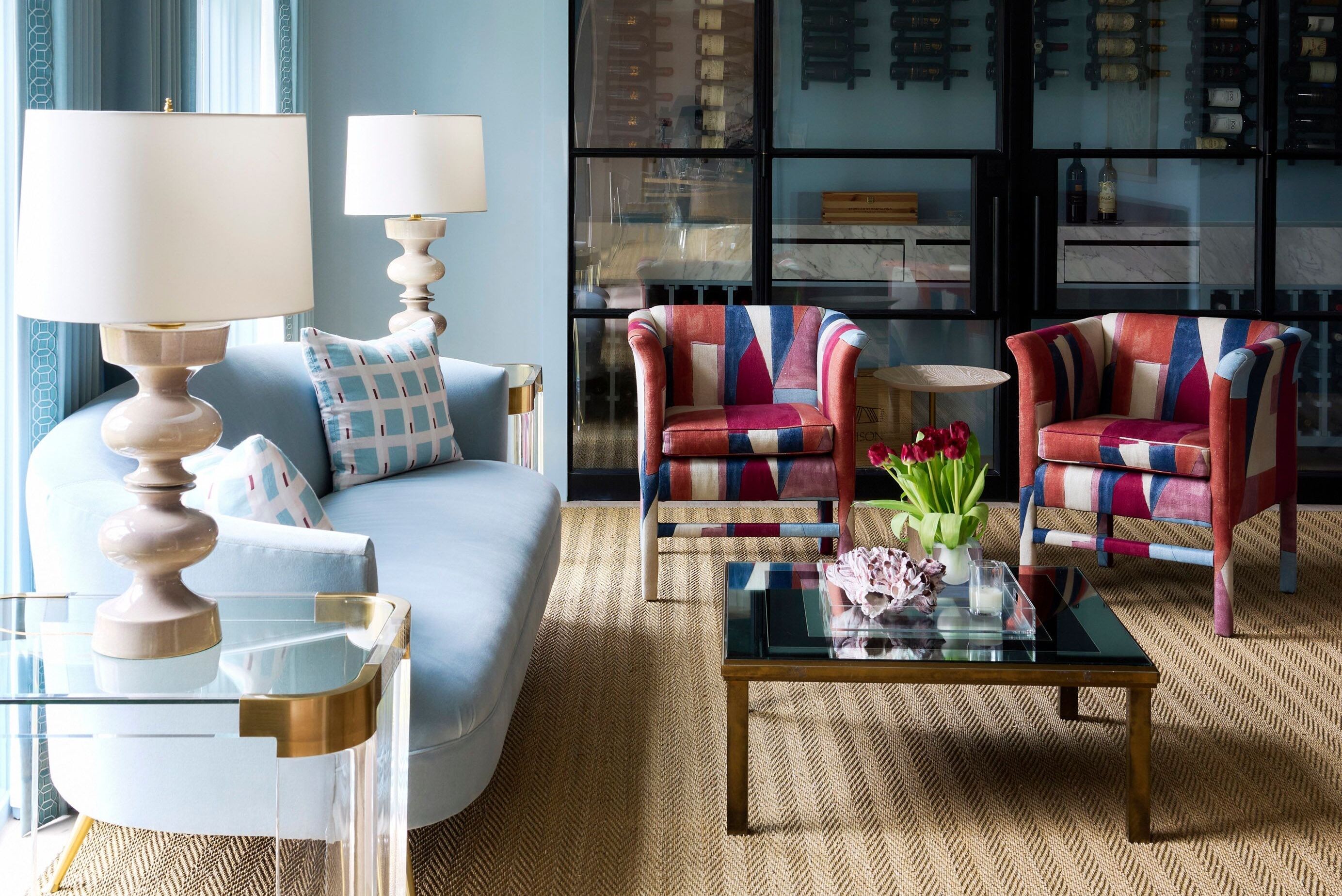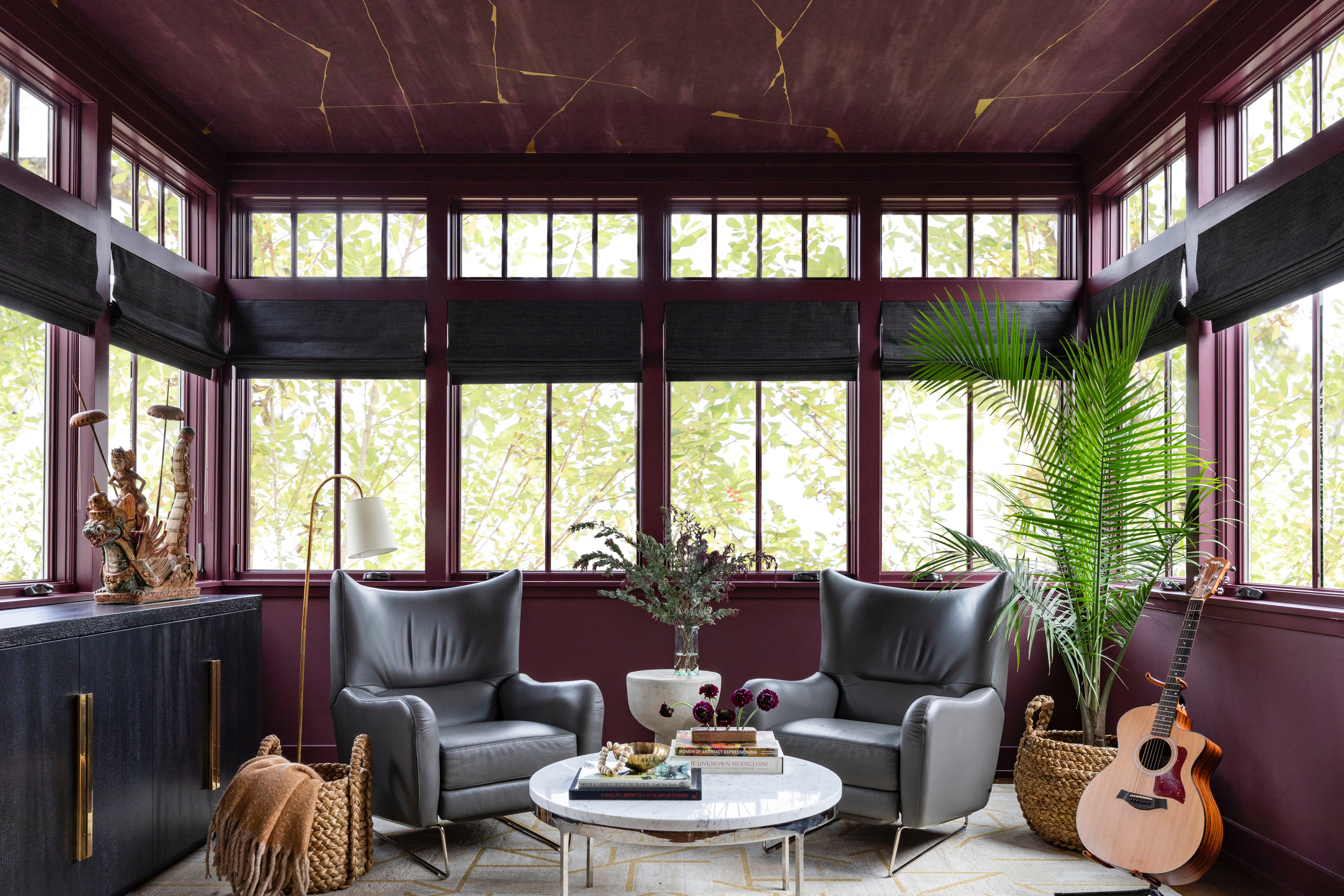Working from Home in Independence Heights
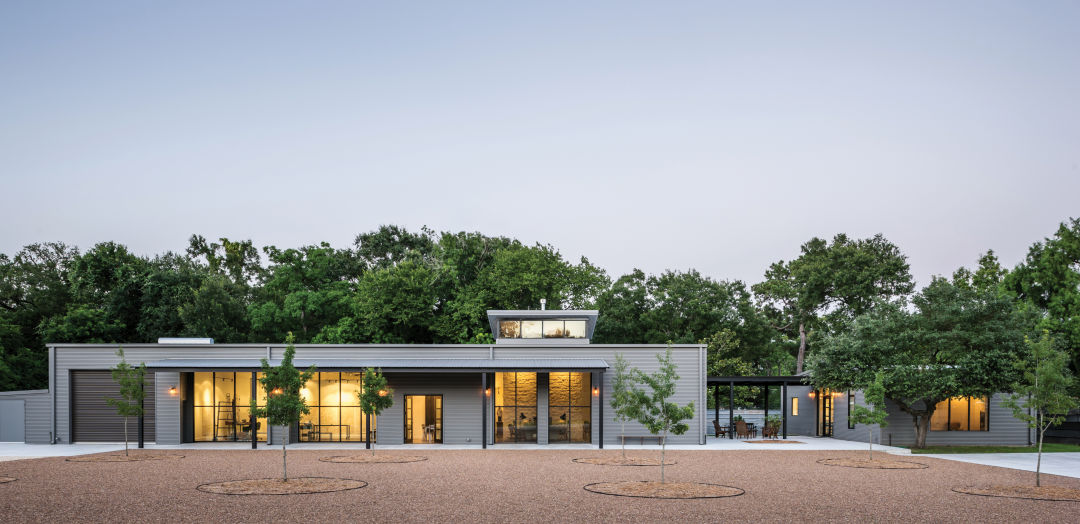
Image: Peter Molick
It wasn’t much to look at; just a rusting old warehouse on a secluded Independence Heights lot that had previously housed an auto mechanic and a tree-removal service. But Karin Broker, an artist and professor of printmaking and drawing at Rice University, had a vision for the place, one that combined warehouse-style living quarters with an art studio. And so in 2015, she convinced her husband, Mark Witte, a commercial developer and principal at J.A. Billipp, to make the leap from a bungalow in Rice Military to an unconventional abode outside the loop.
After purchasing the property, Broker and Witte’s first move was to hire Content Architecture, in large part because Broker had taught firm principal Heather Rowell at Rice, and trusted her thoughtful, creative and collaboration-minded personality.
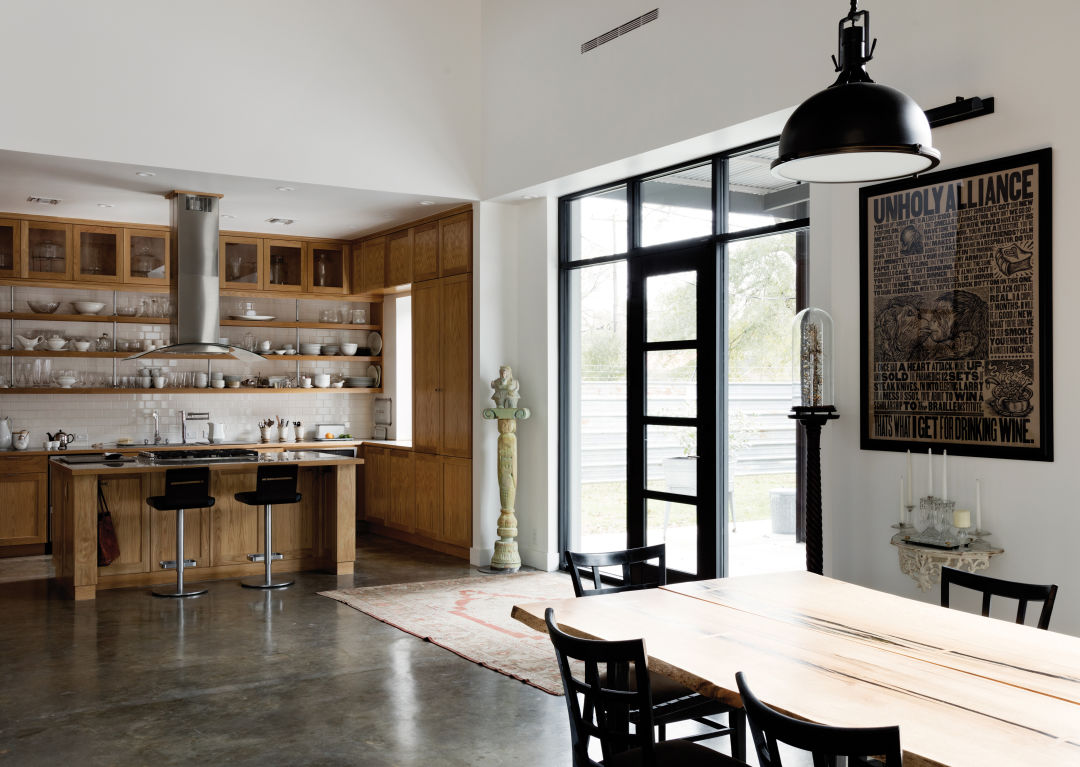
In the kitchen, shaker-style cabinetry adds warmth when paired with open, industrial-style shelving, a stainless steel vent hood and contemporary windows.
“Heather was really good about trusting my design sense. I like the merging of modern and old,” says Broker. “I know tons of architects, and they were all irked that I didn’t choose them. But I thought, ‘Oh my god, no, I can’t,’ because I’m not going to argue with anybody.”
The couple had already thought out the basic plan for Content to execute: a 3,500-square-foot art studio and garage that would occupy the northern end of the long, rectangular structure, with a 2,500-square-foot, open-concept living space anchoring the southern end, connected via portico to an adjacent building, which would become a self-contained guest suite.

The living space is defined by the oversized limestone fireplace and filled with antique furniture Broker found at Blue Bird Circle and The Guild Shop, upholstered in a pale celery green, her preferred neutral.
For the building process, Witte turned to contractors and subcontractors he’d worked with for years through his commercial-development business. The result was a hybrid team of builders and architects who mixed elements from both the industrial and residential worlds—a perfect fit for the project.
“That’s the way we approached this—there’s not a wood stud in this place. It’s all metal studs like you’d see in an office building, all 5/8-inch sheetrock,” Witte says, noting that the material has particular benefits when it comes to hanging art.
“For me, the story of this building is that I get to live with my work,” says Broker, who creates everything from large-scale drawings to steel sculptures. “I need it. When I walk through my studio, I’m going through the archives.”
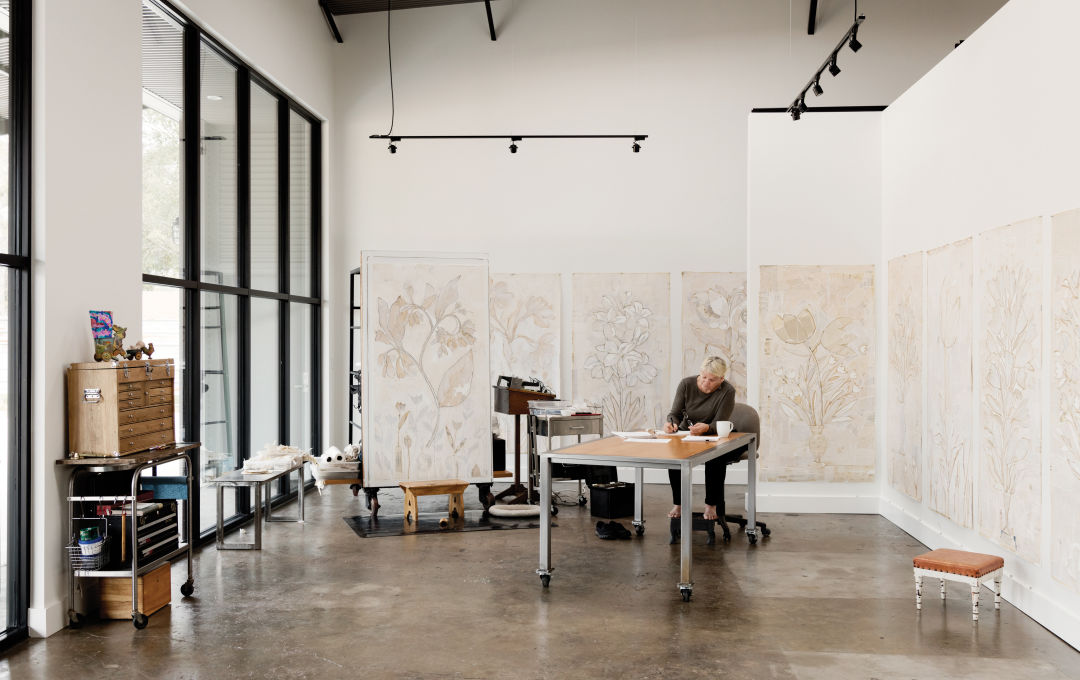
Broker works in her art studio, surrounded by her most recent series, paper collages entitled kay darling, I love you Johnny, created from a set of letters written by a soldier to his wife during World War II.
To transform the warehouse into a modern hybrid space, the existing walls and ceilings of the structure went down, leaving only a steel frame and the concrete floor, with the discarded metal later recycled into exterior fencing. Bringing in lots of light was key, so the architects designed huge windows to break up the metal façade, including two that charmingly mirror the shape of the garage doors that previously fronted the studio space.
The Content team also suggested a simple canopy along the body of the building to create a front porch and minimize some of the westward sun exposure. And because the couple wanted a roof feature to add interest to the building and break up its rectangular shape, the architects came up with the idea of a cupola with a clerestory window anchored by a massive limestone fireplace, which serves as a residential focal point and room divider.
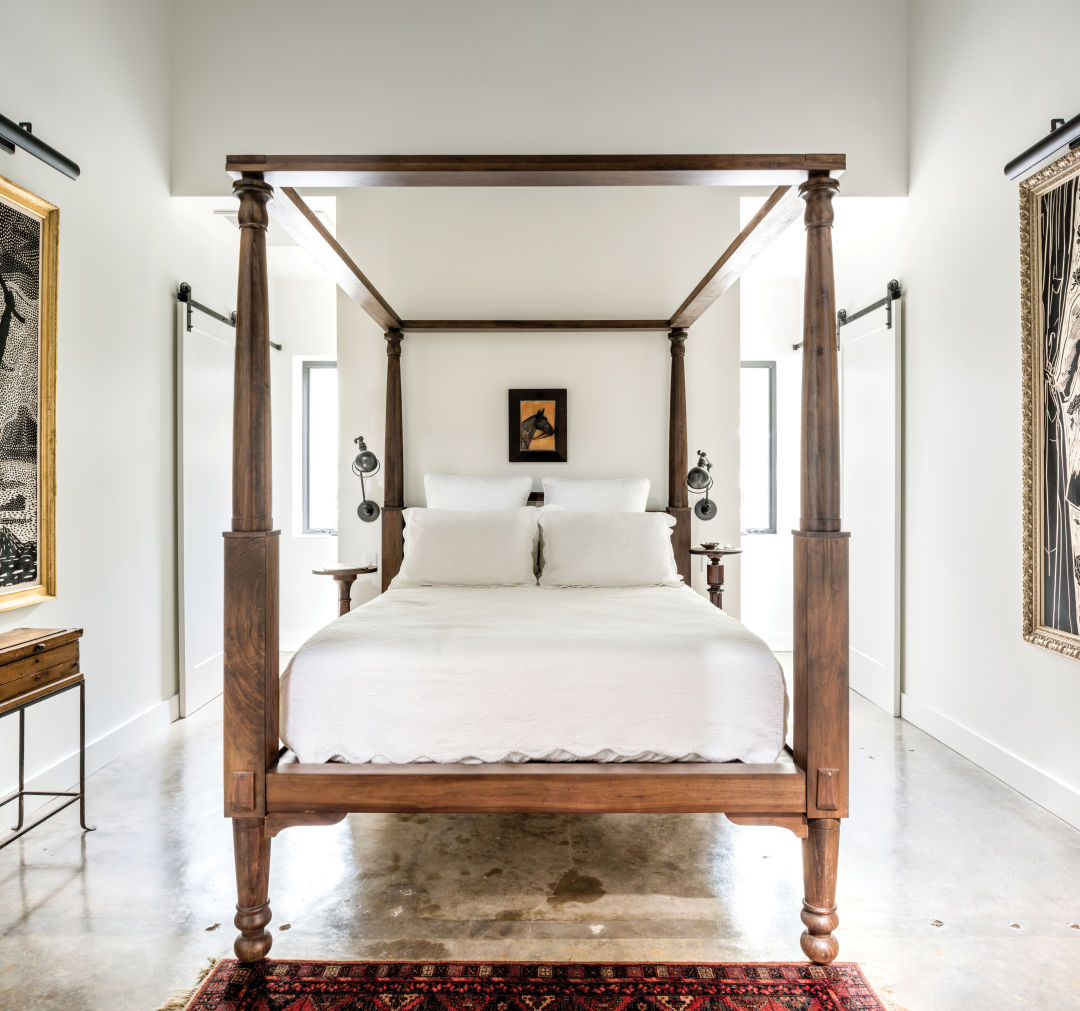
The four-poster bed from Restoration Hardware is flanked by art-filled walls, swing-arm wall sconces and a pair of wooden pedestals in lieu of bedside tables.
Inside the light-filled space, simplicity reigns—Broker is not one for clutter, except maybe when it comes to her array of vintage pedestals, on which she displays her 3-D art constructions throughout the home—and she has an artist’s commitment to perfectly even proportions and spacing. She even had extra struts added to one side of a metal support beam in the ceiling so that it would be symmetrical.“
Only the live-edge white oak dining table, made from fallen timber by Pittsburgh artist Vince Gillen, received a reprieve from the need for evenness and clean lines. Spare white gallery walls serve as backdrops for the couple’s art collection, including several large-scale drawings and prints by Broker.
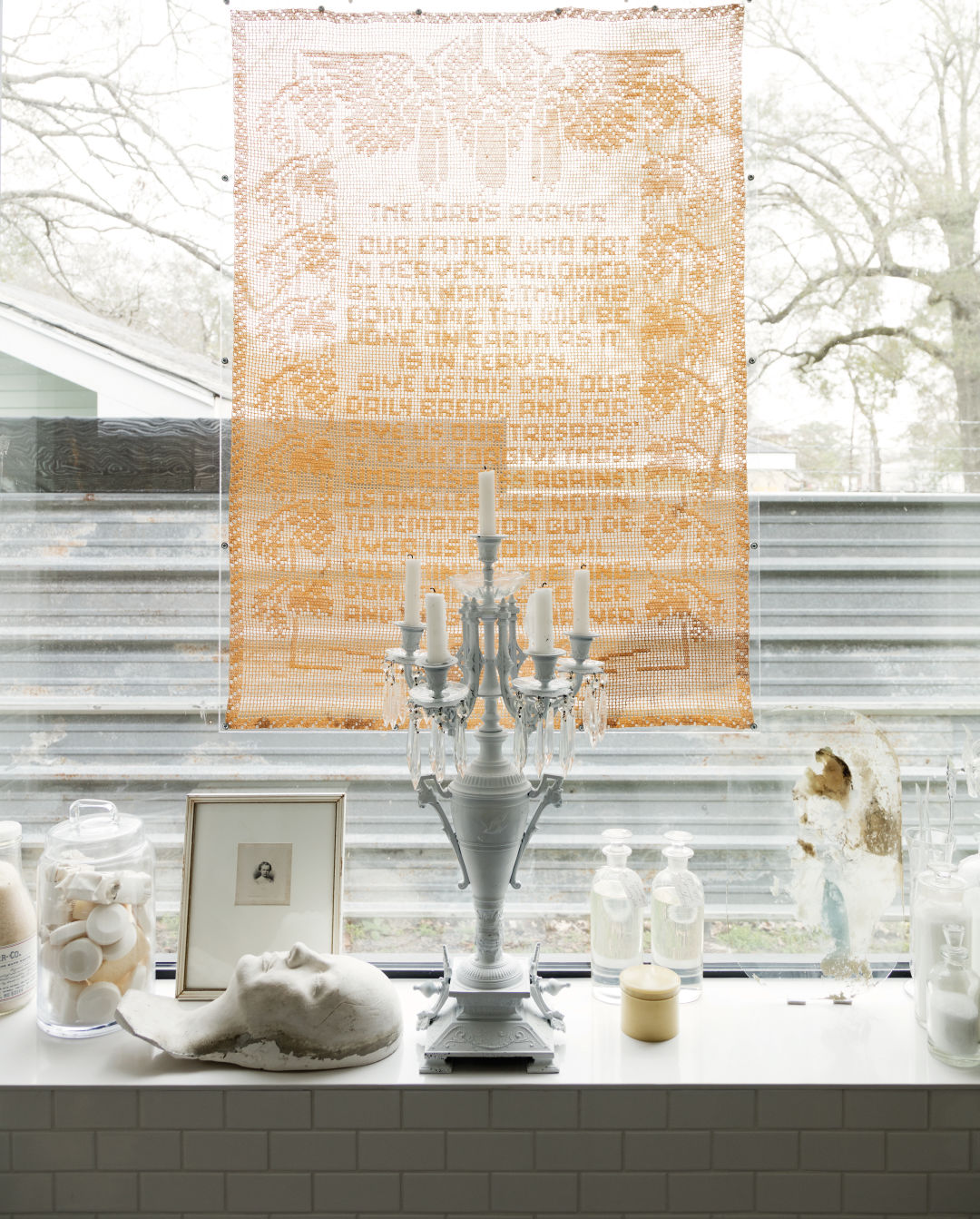
A crochet of the Lord's Prayer, a candelabrum, and a death mask of a young girl, all found by Broker at antique shops, are displayed on the windowsill in the master bathroom.
Contrasting the industrial underpinnings, other materials and furnishings have more of a rustic touch. Simple white subway tile adorns the bathroom, as does a set of barn doors, a clawfoot tub and a vintage metal meat-hook rack from Pittsburgh. In the kitchen and master closet, stained shaker-style cabinets bring a homey vibe.
“That’s not normally the type of cabinet we’d put in one of our projects, but the warmth against all the metal warehouse-type materials makes it so special,” says Content principal architect Jesse Hager.
Though the couple brought in several major pieces, particularly light fixtures, from Restoration Hardware, many others are antiques that Broker has picked up over the years from local resale shops like Bluebird Circle and The Guild Shop, as well as from sources in her native Pennsylvania.

3-D constructions, nailed pieces and collages are among the many formats for Broker's artwork, which often infuses serious subjects with beauty and optimism.
Outside, Witte wanted low-maintenance landscaping, so the couple planted red oaks in evenly spaced rows—in part because Broker found inspiration in the serene grounds of the Kimball Art Museum in Fort Worth, and in part because the former occupants had covered the land in a thick layer of limestone that had to be painstakingly excavated to plant each tree.
The end result is a stunning and surprising project that juxtaposes genres—industrial farmhouse, architecturally minded warehouse, open-concept living space—with grace and aplomb, while managing to feel intimate. It’s hardly surprising that the project won an AIA Design Award last year.
“The benefit of Karin and Mark’s input is that everything feels all theirs,” says Rowell. “Everyone got behind it and wanted to see it through. They took a lot of pride in making something so unique.”
